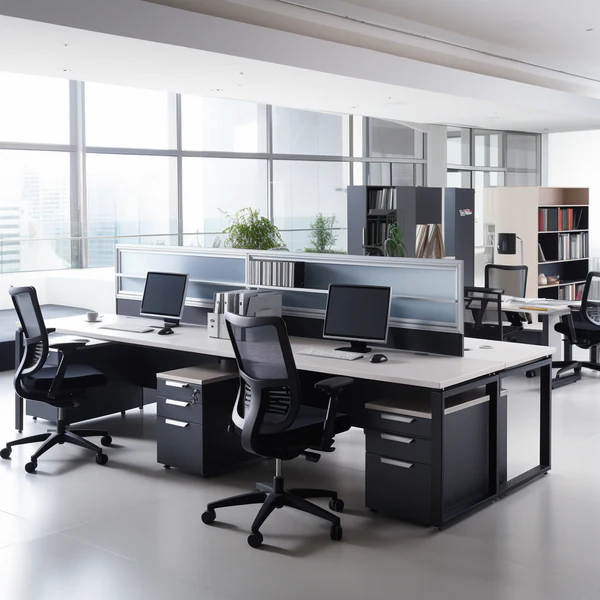
As we navigate the evolving landscape of work, the role of office furniture is becoming increasingly vital in shaping our productivity, comfort, and overall well-being. In today’s blog, we’ll explore the latest trends and innovations in office furniture that are transforming workspaces into dynamic environments where creativity and efficiency thrive.
1. Ergonomics and Health
One of the most significant trends in office furniture is the focus on ergonomics. As more companies recognize the impact of comfort on productivity, ergonomic furniture has moved from a niche option to a standard feature in modern offices. Adjustable chairs, sit-stand desks, and supportive accessories like lumbar cushions are designed to promote good posture and reduce the risk of musculoskeletal issues.
2. Flexibility and Adaptability
Gone are the days of static, cubicle-based workspaces. The modern office is all about flexibility and adaptability. Modular furniture systems allow for easy reconfiguration of workspaces to accommodate different needs, whether it’s a collaborative meeting or a quiet area for focused work. Furniture that can easily transition from formal to informal settings helps create a more versatile environment.
3. Sustainable Materials
Sustainability is no longer a buzzword; it’s a necessity. Office furniture manufacturers are increasingly using eco-friendly materials, such as recycled plastics, sustainably sourced wood, and low-VOC finishes. By choosing sustainable furniture options, companies can reduce their environmental impact while creating a healthier workspace.
4. Smart Furniture
The integration of technology into office furniture is on the rise. Smart desks with built-in charging ports, IoT-enabled lighting systems, and furniture with built-in speakers or wireless charging pads are becoming common. These innovations enhance the functionality of office furniture, making it easier for employees to stay connected and productive.
5. Aesthetic Appeal
A well-designed workspace can significantly influence mood and productivity. Modern office furniture offers a wide range of styles, from sleek and minimalist to bold and colorful. Customizable options allow businesses to align their furniture choices with their brand identity and create an environment that inspires creativity and engagement.
6. Hybrid Work Solutions
With the rise of hybrid work models, office furniture needs to cater to both in-office and remote work. Collaborative furniture, such as movable partitions and flexible seating arrangements, supports teamwork and brainstorming sessions. At the same time, home office setups are being designed to provide comfort and functionality for remote workers.
7. Focus on Acoustics
Noise can be a significant distraction in an open office layout. New furniture designs include acoustic panels, soundproofing materials, and other noise-reducing features that help create a quieter, more focused work environment. These solutions improve both individual and team productivity.
8. Personalization and Well-being
Personalized workspaces are becoming a key focus. Furniture that allows for personal touches and customization can help employees feel more at home and engaged. Options like adjustable lighting, personalized storage, and comfortable lounge areas contribute to overall well-being and satisfaction.
Conclusion
The future of office furniture is bright, with innovations that cater to both functional needs and personal preferences. As we embrace these trends, it’s clear that well-designed office furniture not only enhances productivity but also contributes to a healthier, more enjoyable work environment. Whether you’re outfitting a new office or refreshing an existing space, considering these trends will help create a workspace that’s not only functional but also inspiring.